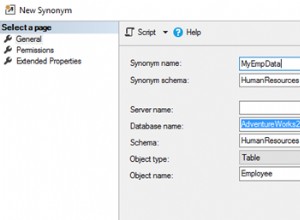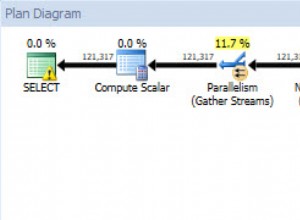Sie können den Platzhaltern beliebige Namen geben, also etwa so für Ihr SQL:
INSERT INTO propAmenities
(amenity_id, property_id)
VALUES
(:amenity_id1, :property_id1),
(:amenity_id2, :property_id2),
(:amenity_id3, :property_id3)
Und dann:
$stmt->bindParam(':amenity_id1', 1);
$stmt->bindParam(':property_id1', 1);
$stmt->bindParam(':amenity_id2', 2);
$stmt->bindParam(':property_id2', 1);
$stmt->bindParam(':amenity_id3', 3);
$stmt->bindParam(':property_id3', 1);
Oder bauen Sie natürlich das entsprechende Array für execute . In diesem Fall ist es jedoch möglicherweise einfacher, mit unbenannten Platzhaltern zu arbeiten:
INSERT INTO propAmenities
(amenity_id, property_id)
VALUES
(?, ?),
(?, ?),
(?, ?)
Und dann können Sie Ihre Werte durchlaufen und execute aufrufen mit dem entsprechenden Array:
$stmt->execute(array(1, 1, 2, 1, 3, 1));




